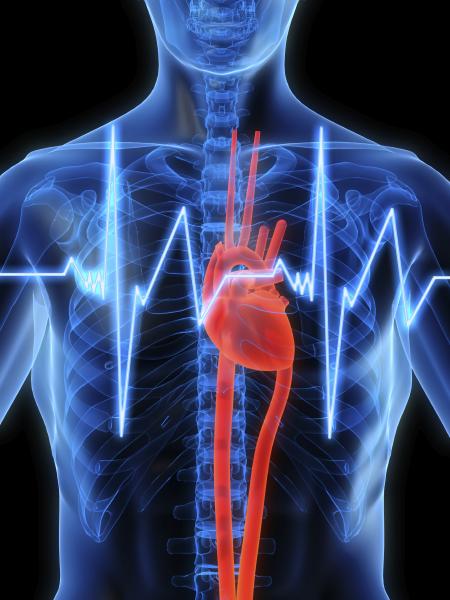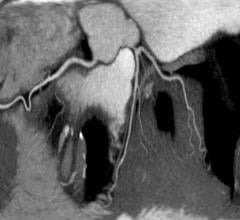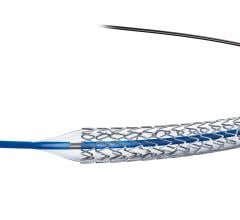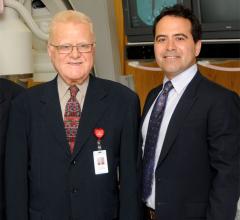
The Cardiothoracic Surgical Trials Network (CTSN), whose Data and Clinical Coordinating Center is at Icahn School of Medicine at Mount Sinai, is reporting evidence on whether or not there is any significant difference between the two current surgical approaches to treat patients with severe ischemic mitral regurgitation: mitral valve repair and mitral valve replacement.

Four cardiovascular professional societies released an overview of transcatheter therapies for mitral regurgitation. Intended to “help frame subsequent discussions” among the field’s various stakeholders, the document highlights critical issues that should be considered as the technologies are integrated into clinical practice.
Claron Technology, Inc. debuts version 3.0 of Withinsight Framework (WIF), an advanced platform that accelerates development of medical image visualization applications, at the 2013 Radiological Society of North America (RSNA) conference. This next-generation WIF includes enhancements in rendering, segmentation tools, and overall performance, providing Claron’s partners with advanced technology to meet their evolving needs.
Providing exceptional cardiovascular care for patients to achieve the best possible outcomes is the number one goal for ...
An analysis of data from an international multicenter study of coronary computed tomography angiography (CCTA) reveals that men and women with mild coronary artery disease (CAD) and similar cardiovascular risk profiles share similar prognoses.
With the benefits of conventional strategies for therapeutic hypothermia following cardiac arrest being called in to question following the publication of two new studies, brain protection specialist BeneChill has restated its conviction that early, targeted brain cooling is the key to improved neurological outcome and survival for the estimated 700,000 people in Europe who annually suffer cardiac arrest.

Topera Inc. shared the results of an independent evaluation of its diagnostic system’s ability to improve atrial fibrillation (AF) outcomes by identifying of the sources that sustain complex cardiac arrhythmias.
Cardiac positron emission tomography (PET) is growing in popularity among cardiologists because it provides the ability ...
Boston Scientific Corporation has received U.S. Food and Drug Administration (FDA) approval for the Promus Premier Everolimus-Eluting Platinum Chromium Coronary Stent System, the company's durable polymer drug-eluting stent (DES).
A new study reports that individuals who underwent embolization of the left gastric artery for gastrointestinal bleeding experienced a 7.9 percent decrease in body weight three months after the procedure. Results of the study, which offer a potential new avenue for obesity research, will be presented next week at the annual meeting of the Radiological Society of North America (RSNA).
On Oct. 1, Bayshore Community Hospital received approval from the Department of Health as a Primary Percutaneous Coronary Intervention (PCI) hospital to provide emergency angioplasty procedures on patients suffering from a heart attack.
When performing radiofrequency (RF) ablation to treat cardiac arrhythmia, medical professionals must balance the safety ...

Siemens Healthcare introduced Somatom Force, the company’s next-generation Dual Source computed tomography (CT) system at the Radiological Society of North America Annual Meeting (RSNA 2013) in Chicago.
Using a stroke rehabilitation device that converts an individual's thoughts to electrical impulses to move upper extremities, stroke patients reported improvements in their motor function and ability to perform everyday activities. Results of the study were presented at the Radiological Society of North America Annual Meeting (RSNA 2013).
Healthy adults who consumed energy drinks high in caffeine and taurine had significantly increased heart contraction rates one hour later, according to a study presented at the the Radiological Society of North America Annual Meeting (RSNA 2013).
Change Healthcare Cardiology Hemodynamics is an integrated hemodynamic monitoring system for monitoring vital signs and ...

Healthcare providers must reinforce their efforts to monitor and visualize dose levels from radiology examinations to enhance patient safety and meet new regulatory demands. There is also a need to justify and optimize the usage of radiation dose to find a balance between safer practice, image quality and lower dose – all for the benefit of the patient. Implementing tools for automatic and continuous follow up of radiation dose is at the forefront of meeting these challenges.

The significant increase in radiation exposure and uncertainty regarding the risk of cancer have raised concerns leading to a recent change of direction within medical imaging. Several initiatives to lower dose levels are being established and many healthcare providers have initiated dose reduction programs to guard patient safety and to comply with new regulations.

The radical increase in patient exposure to radiation from medical imaging over the last two decades has created great concerns about its inherent risks. Today, one of the highest priorities on many hospital agendas is to break this trend by achieving improved control of the radiation exposure to their patients.

 December 04, 2013
December 04, 2013










